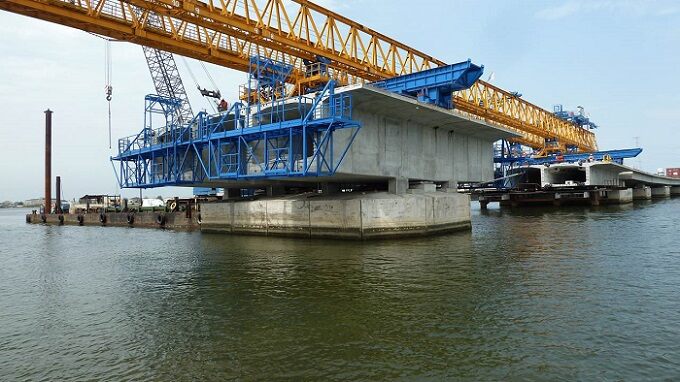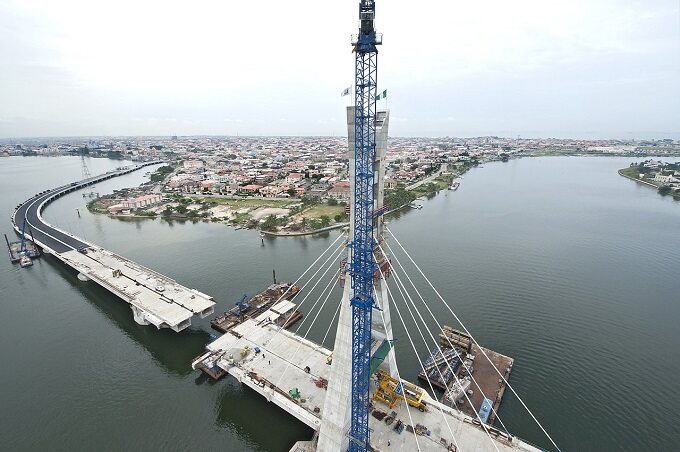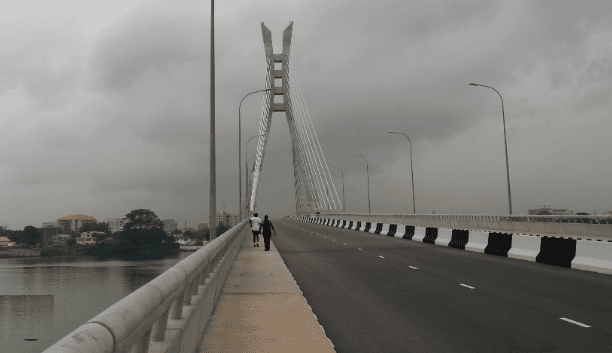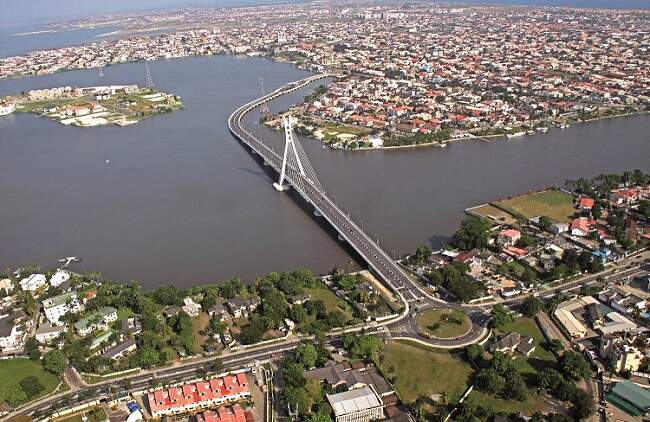The Lekki-Ikoyi Link Bridge ,an architectural marvel and a symbol of modern engineering, is the first-ever cable-stayed bridge in Nigeria. This bridge is not only a testament to Nigeria’s engineering prowess but also a significant milestone in West Africa’s infrastructure development. The 1.36 Km bridge connects the bustling Lekki to the Ikoyi axis of Lagos. While the bridge helps to ease vehicular traffic within the area, the curbs serves as recreational facility for residents of the area.

Designing the Lekki-Ikoyi Link Bridge
Lagos, a city that houses millions and stands as West Africa’s largest financial and economic metropolis, is characterized by rapid growth. However, this growth places immense strain on the city’s infrastructure as Lagos not only caters to the needs of the entire country but also serves regions beyond its borders.
The responsibility to alleviate traffic congestion in the Eti-Osa, Lekki, Epe, and Ikoyi environs fell upon Julius Berger, one of Nigeria’s top construction companies. The task required the construction of an additional bridge across the Five Cowries Creek, which has to meet two requirements:
- Facilitate easier commute for tens of thousands of people moving to and fro the city’s business district.
- The bridge must meet the aesthetic expectations of Lagos State, transforming the bridge into a landmark. Thus, the Lekki-Ikoyi Link Bridge was conceived.
The construction of this bridge faced several challenges from the start, including determining the best route. Ultimately, only one route met all criteria. The selected route goes through mostly empty land and easily connects to the current roads. It also allows boats to pass without any traffic problems.
The bridge itself is divided into two sections: the approach bridge and the main bridge, with its most distinguishing feature being the imposing pylon.

The Construction of the Lekki-Ikoyi Link Bridge
The deadline for the construction of the bridge made the project more demanding, necessitating precise and efficient work. The approach bridge employed a panel construction method where full-span bridge panels were prefabricated on land and transported to the construction site on pontoons. These heavy panels, weighed up to 250 tons each and could only be transported during high tide due to the lagoon’s shallow waters. Julius Berger developed special launching gantries to install the 92 concrete slabs successfully.
The main bridge was constructed using prefabricated elements, utilizing a long-line segment framework to ensure precise alignment of the 75-meter superstructure elements. Each segment was unique and having to remake just one individual segment will delay construction by four to six weeks.
A 120-meter-long launching gantry was used for segment installation, while the pylon took shape simultaneously. A cantilever beam was later employed to suspend the bridge. The design of the pylon’s legs required innovative solutions, with a hydraulic self-climbing framework enabling it to reach a towering height of 90 meters. A 110-meter free-standing crane was used to transport composite steel boxes for anchoring the incline stay cables, requiring precision with an insulation tolerance of +- 0.4 degrees.
To install the incline stay cables that hold up the bridge , they started at the bottom and added pieces of the cable in both directions.They could only add more pieces after securing and tightening the cable every four pieces. Every change to the structure, from segment installation to equipment movement and cable tightening, impacted the pylon’s sensitive structural integrity throughout the construction project.

Project Completion and Operation
All through the construction, the project was constantly monitored due to the bridge’s lightweight appearance. The planning and construction of the Lekki -Ikoyi link bridge was completed within 42 months, with up to 800 Julius Berger employees working on the project at any given time.
The Lekki-Ikoyi Link Bridge was constructed at a cost of 29 billion naira and it was officially commissioned by the then Executive Governor of Lagos State, Babatunde Raji Fashola, on Democracy Day, the 29th of May 2013, marking his sixth year in administration. The Lekki-Ikoyi Link Bridge opened to the public on June 1, 2013, with a tollgate located at its Lekki end, operated by the Lagos Tolling Company.
Since opening to the public, there’s been many sporting and reaction events. Notably, the access bank lagos city which starts at the Surulere National Stadium, through Lekki/Ikoyi Bridge and finally ending at the Eko Atlantic

